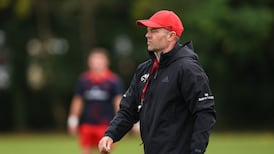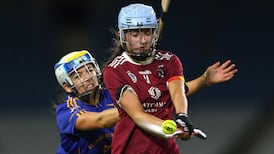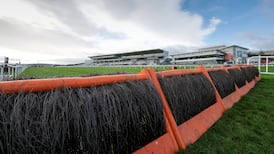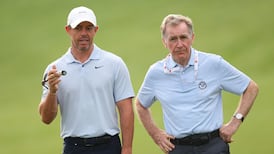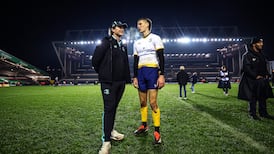COACHES' CORNER GETTING STARTED:Coaching experts JIM KILTYand LIAM HENNESSYconclude their series with a timely reminder: that all great athletes began training by crawling, rolling and twisting
EVERY GREAT athlete and player started out by crawling, rolling, falling and twisting! Does this sound familiar? Well all great athletes from the moment they were born were crawling, rolling and twisting – they were actually training. “Training” might seem a bit strong but certainly movement such as crawling, which occurs in the first 12 weeks for the newborn baby, are crucial preliminary training movements that help prepare the baby for grater physical exploits later in life.
Milestones – Many parents and coaches will be aware of the “Motor Milestones” that babies achieve through the first one and a half years of life. Some experts in this field tell us that there are clear movement milestones that each baby should achieve for normal movement and motor development. For example while crawling on the belly is an initial milestone, kicking legs and thrusting the arms while lying on the back is another milestone that occurs with the first 10 weeks.
Just a little later at perhaps between 13 and 20 weeks the baby is learning to do “press-ups” – well not the classical ones that we see completed in the gym, rather simple efforts using the arms to elevate the chest from the floor while lying on the belly. Yes the training routine has begun in earnest and this brings us to our main point.
Go back to move forwards – Some leading coaches are now suggesting that we need to revisit these basic rudimentary patterns of movement to help train and prepare our teenage and adult players to become better at their sporting movements and skills. This is because the basic rudimentary movements are the actual foundation for better skilled sport movement later in life.
Numerous studies have recently highlighted the increase in the number of overweight and obese children. Intertwined within this weight gain there is an actual decrease in physical activity and exercise as well. Our sedentary lifestyles also contribute to what we call poor physical function. Not only is cardiovascular fitness affected but also other noticeable problems are starting to be very evident in our children.
The slouched seated position that every boy and girl assumes every day of the week is a problem. The time spent seated in a slouched position has increased over the decades and this perhaps is also affecting our physical functioning in many unseen ways. Slouching is part of the daily routine and it seems that more time is spent nowadays in poor posture by not only our youth but also adults compared to decades ago.
Does this have a knock-on effect? Certainly, according to the experts, the effects of sedentary living coupled with the convenient computer technology and other non-physical activity attractions are not helping our posture and indeed our physical fitness.
A knock-on effect however of poor posture is also poor movement function and we are seeing this increasingly in our young players and athletes.
So what can we do to address this modern-day dysfunction in posture and movement?
Well instead of prescribing strength training programmes based on lifting loaded weights a more sensible approach is to start at the beginning – where it all began as a baby. Simple crawling exercises such as the “spiderman” exercise as are terrific for developing those basic rudimentary movement patterns. For the young school-going boy or girl it would be of great benefit if gymnastics or dance were part of their movement curriculum.
Team games are obviously great for sport and enjoyment but may not be the ideal form of exercise for addressing basic postural issues. Thus we recommend a return to more rudimentary basic exercises and routines for the team player – exercises that will supplement their sport skills. These exercises can be simply arranged into a short circuit or completed regularly as part of a team warm-up.
These notes are contributed by Dr Liam Hennessy and Jim Kilty of Setanta College, the Institute of Strength and Conditioning Studies (www.setantacollege.com)
